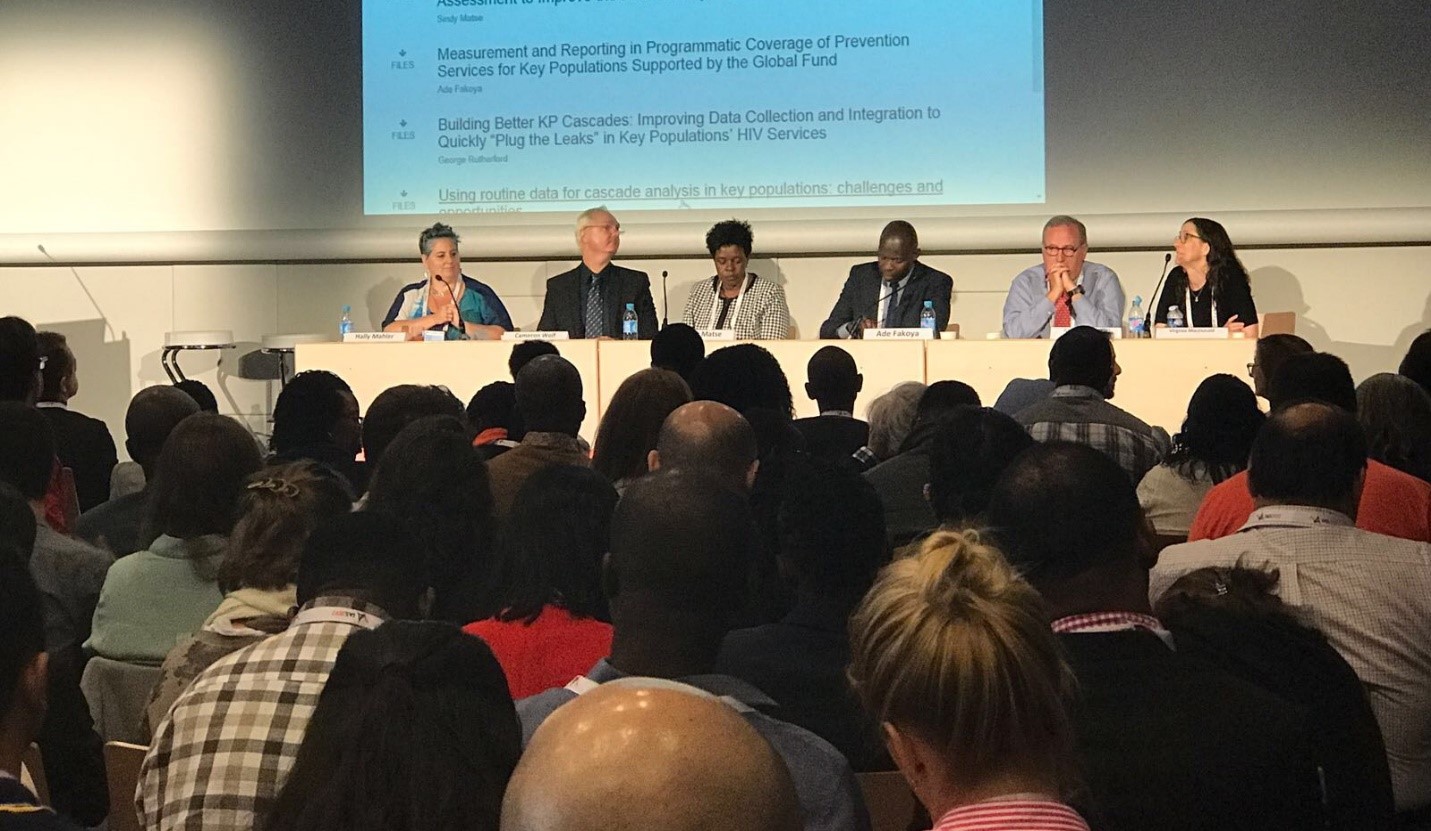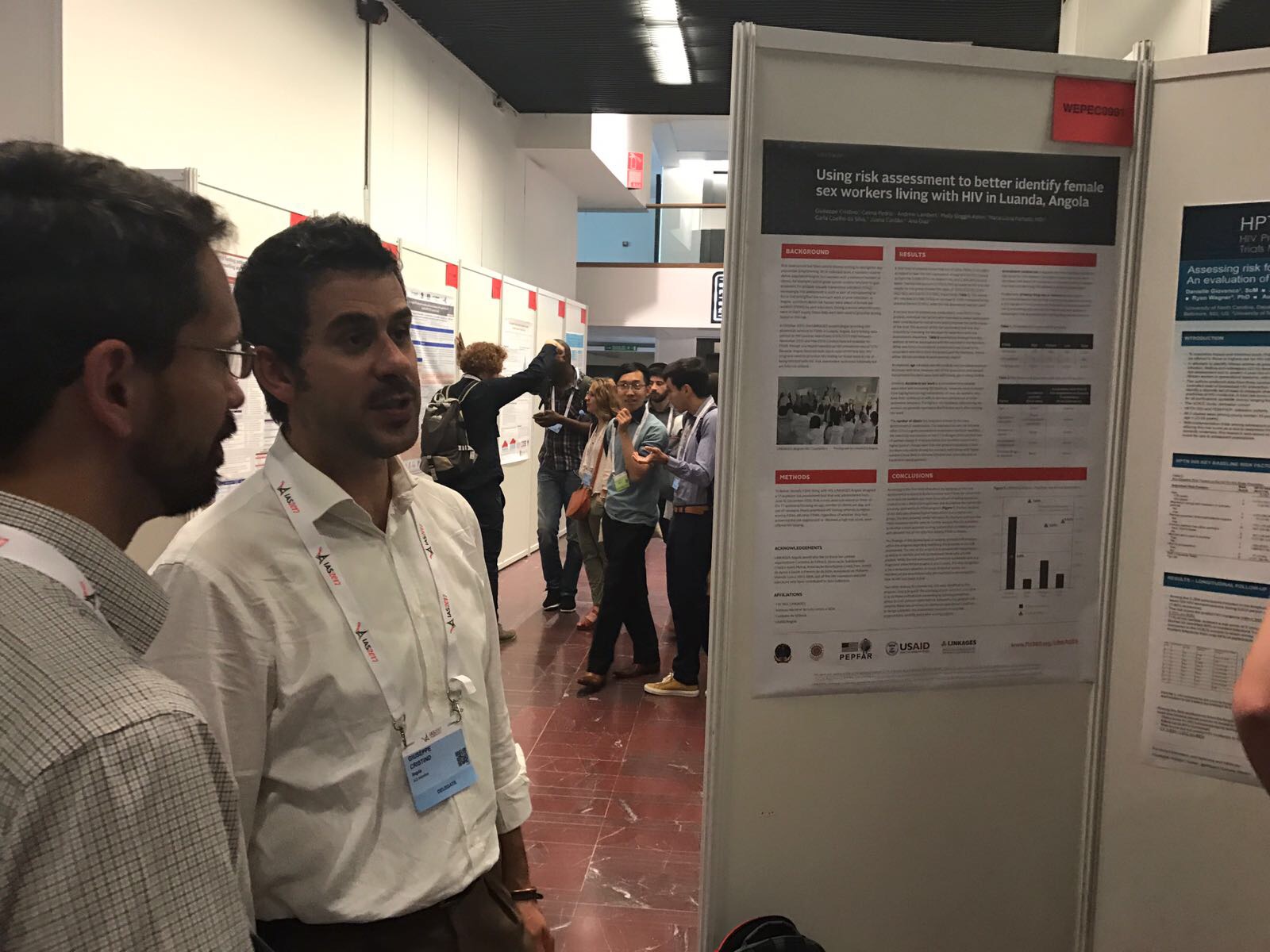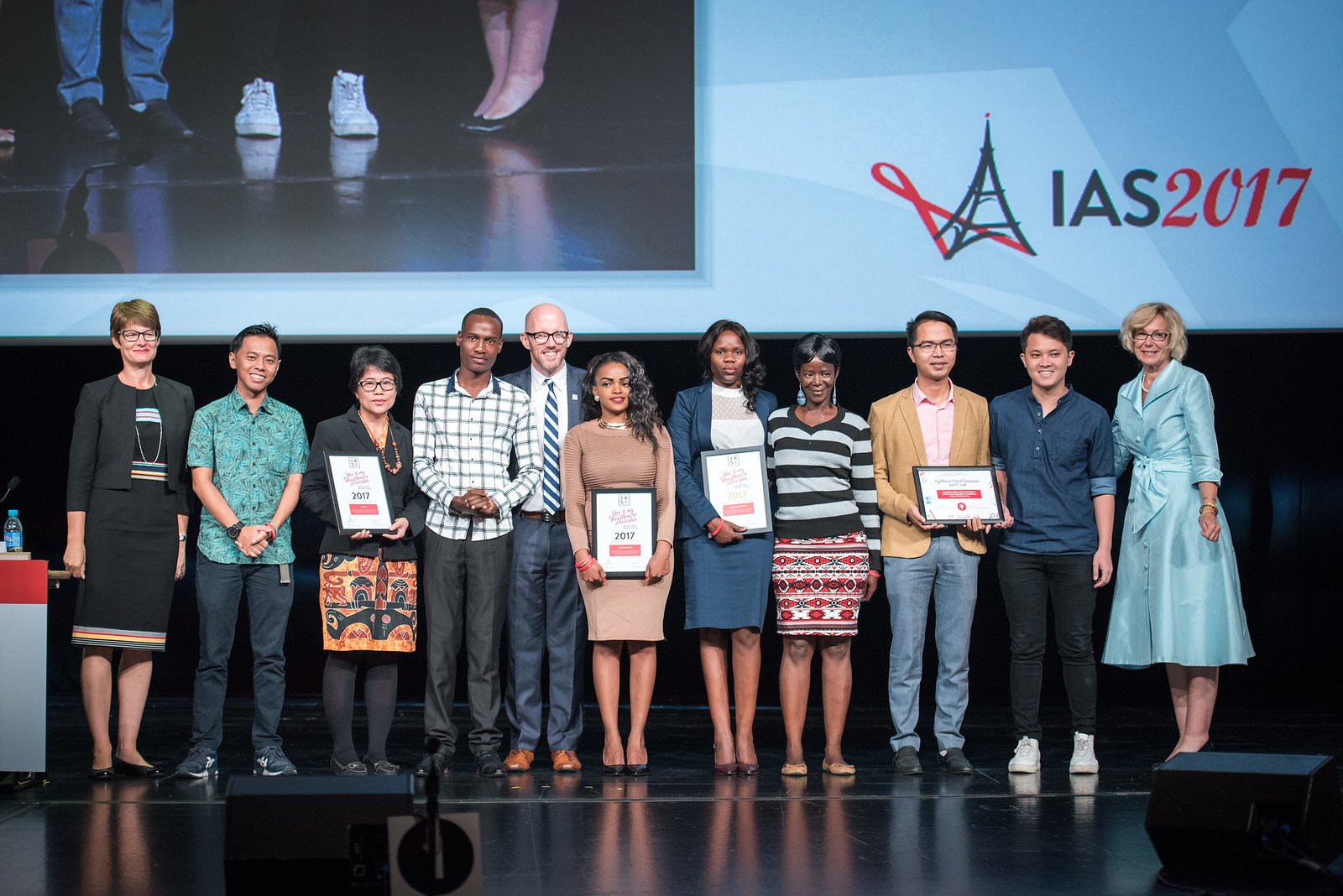Event Date
Written by Tiffany Lillie, LINKAGES Senior Technical Advisor; Hally Mahler, LINKAGES Director; and Chris Akolo, Director of Global Health, Population, & Nutrition, FHI 360

Hally Mahler leads one of two satellite sessions hosted by LINKAGES at IAS 2017.
LINKAGES had a significant presence at the 9th International AIDS Society (IAS) Conference on HIV Science (IAS 2017), held July 23-26 in Paris. The project hosted two satellite sessions on key populations (KPs), an oral abstract on peer navigation in Cameroon, and 12 poster exhibitions from Angola, Botswana, Burundi, Kenya, and Thailand. During the conference, LINKAGES also participated in multiple stigma and discrimination sessions hosted by IAS and the “Me and My Healthcare Provider Initiative,” a global campaign focused on the broader needs of KPs affected by HIV that celebrates the many doctors, nurses, receptionists, pharmacists, and other frontline health providers who deliver quality HIV prevention and care to their KP patients every day.
UNAIDS offered these global statistics: “In 2016, more than two-thirds (70 percent) of people living with HIV now know their HIV status. Of the people who know their status, 77 percent were accessing treatment, and of the people accessing treatment, 82 percent were virally suppressed.”

Giuseppe Cristino (LINKAGES Angola) presents a poster on HIV risk assessment.
While the numbers are promising, UNAIDS also noted that those most at risk for HIV – namely KPs – are still being left behind, and integrated health services will be necessary moving forward to reach 90-90-90 targets. This idea was a key takeaway from IAS 2017, with increased attention being placed on the need to deliver quality and responsive HIV services to KPs – including men who have sex with men, people who inject drugs, sex workers, and transgender people.

Chris Akolo addresses a group of KP health workers during a special session.
Globally, 44 percent of new HIV infections are among KP members and their sexual partners. In sub-Saharan Africa (SSA), that figure remains at 25 percent. In regions outside of SSA, a staggering 80 percent of new HIV infections are among these groups. So, what innovative service delivery models were showcased at IAS 2017 to improve HIV programming for KPs worldwide? The LINKAGES team notes seven key takeaways:
- Pre-exposure prophylaxis (PrEP), the use of anti-HIV medication to keep HIV-negative people from being infected, is being scaled up at a tremendous rate around the world. In the United States, Europe, Africa, and certain parts of Asia, PrEP on demand is increasingly popular. In order to prevent HIV from spreading, health organizations must take bold action to move forward with PrEP.
- Undetectable = Untransmissible. The evidence is clear. A large study was conducted in Australia, Brazil, and Thailand that examined transmission risk among HIV serodiscordant MSM couples. After years of follow-up, not a single linked HIV transmission within any of the participating couples was found. This groundbreaking research supports the hypothesis that undetectable viral load prevents HIV transmission in MSM. MSM-specific programs are beginning to use this data to help encourage HIV treatment with sex-positive messaging.
- Innovations in information and communications technology (ICT) are forging ahead quickly, particularly with online appointment systems that allow at-risk populations to maintain confidentiality while seeking HIV testing or treatment services. Initial success with LINKAGES’ own SMS2, a mobile system that allows peer outreach workers to send text messages to KPs to ask about HIV service satisfaction, proves that ICT is an essential component of HIV programs.
- HIV self-testing is here and ready for prime time. Several studies, including LINKAGES Thailand work, have revealed that people like to have a variety of choices in how they access self-testing. Presentations on mail order, central pickup locations, and peer-mediated testing were given at IAS 2017.
- Stigma and discrimination are real barriers to achieving an HIV and AIDS-free generation, but there are no easy answers. Stefan Baral, Associate Professor of Epidemiology at Johns Hopkins Bloomberg School of Public Health, presented research on this topic. After an intensive training package in stigma reduction for KP clients and health providers, clients became more willing to seek health services but their experiences of discrimination within the health system did not diminish.
- Differentiated care and service delivery is promising for HIV programming for KPs. Providing options to individuals grants them autonomy and allows them to choose how and when they access services. IAS released a supplement on differentiated care and HIV, which prominently features KPs.
- Finally, demonstration projects are no longer necessary. The previously mentioned innovations, channels, and topics of discussion at IAS 2017 have proven successful in improving health outcomes. What comes next? Health organizations and other key stakeholders must take these innovations in HIV science and bring them to scale where they are needed most.

Lusia Ang, Stella Chege, and Neo Monnapula were recognized as HIV health provider champions. Photo courtesy of IAS 2017.
